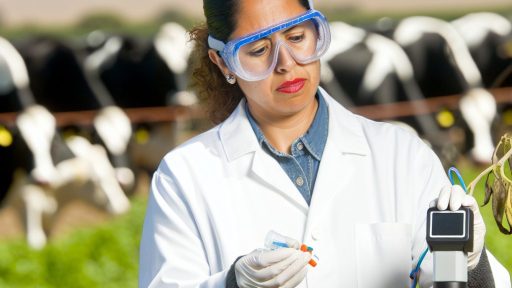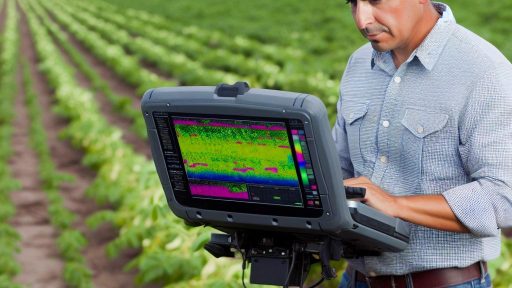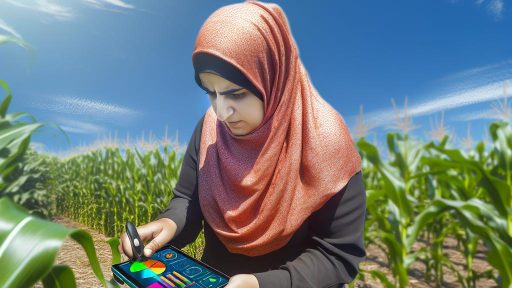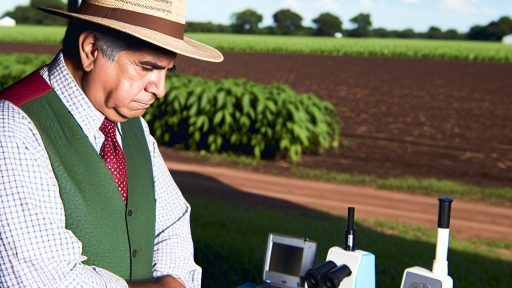Overview of Advanced Crop Disease Detection Technologies
Introduction to Crop Disease Detection
Advanced technologies revolutionize how farmers detect crop diseases.
These innovations streamline disease management, enhancing agricultural productivity.
Types of Advanced Detection Technologies
Remote sensing techniques offer real-time monitoring of crops.
Drone technology provides aerial views, identifying potential issues early.
Machine learning algorithms analyze vast amounts of data effectively.
Image recognition software detects symptoms that may not be easily visible.
Benefits of Utilizing Advanced Techniques
Early detection reduces crop loss, saving farmers time and resources.
This technology improves decision-making with precise data analysis.
Farmers gain the ability to monitor large areas efficiently.
Cost-saving measures emerge from targeted responses to infections.
The Role of Data in Disease Management
Data analytics allows for understanding disease patterns over time.
Farmers use historical data to predict future outbreaks.
Integrating data from different sources enhances overall accuracy.
Case Studies and Real-World Applications
Numerous farms report increased yields after adopting these technologies.
For instance, Oakfield Farms has significantly reduced pest-related damage.
Transform Your Agribusiness
Unlock your farm's potential with expert advice tailored to your needs. Get actionable steps that drive real results.
Get StartedTech companies collaborate with agricultural experts to optimize solutions.
Future Trends in Crop Disease Detection
Innovations in AI will further improve detection capabilities.
Integration of IoT devices will provide continuous monitoring possibilities.
As technologies evolve, farms will become increasingly efficient.
Impact of Crop Diseases on Agricultural Productivity
Overview of Crop Diseases
Crop diseases pose significant challenges to farmers worldwide.
They can result in reduced yields and lower quality produce.
Farmers often face economic losses due to these diseases.
Furthermore, diverse factors contribute to the incidence of crop diseases.
Economic Consequences
The economic impact of crop diseases can be severe.
Globally, billions of dollars are lost each year in agriculture.
Farmers may struggle to recover expenses from disease-affected crops.
Consequently, their financial stability is put at risk.
Impact on Food Security
Crop diseases threaten food security for many communities.
As diseases reduce harvests, food availability decreases.
This situation can lead to increased food prices.
Moreover, vulnerable populations may suffer the most.
Environmental Effects
Crop diseases can also have environmental implications.
When farmers use pesticides excessively, it harms ecosystems.
This practice can lead to pest resistance and biodiversity loss.
Thus, controlling crop diseases is vital for environmental health.
Long-Term Agricultural Impact
The long-term impact of crop diseases is concerning.
They can lead to changes in farming practices and crop choices.
Farmers may switch to less effective or less popular crops.
This transition affects agricultural diversity and sustainability.
Showcase Your Farming Business
Publish your professional farming services profile on our blog for a one-time fee of $200 and reach a dedicated audience of farmers and agribusiness owners.
Publish Your ProfileEarly Detection: Key to Preventing Crop Loss
Understanding Crop Diseases
Crop diseases pose significant threats to agricultural productivity.
They can drastically reduce yield and quality of crops.
Farmers often struggle to identify these diseases early.
By understanding crop diseases, farmers can develop better detection methods.
The Role of Technology in Detection
Advanced technologies enhance the detection of crop diseases.
These technologies include remote sensing, drones, and machine learning.
They allow farmers to monitor fields more efficiently.
Using these tools, farmers can identify issues before they become severe.
Benefits of Early Detection
Early detection leads to timely interventions and actions.
Farmers can apply targeted treatments to affected areas.
Consequently, this approach saves both time and resources.
Moreover, it minimizes the spread of diseases to unaffected crops.
Case Studies on Successful Implementation
Many farmers have successfully integrated technology into their practices.
For example, Lena’s farm used drones for aerial imaging.
This approach allowed her to detect rust in her wheat fields early.
Similarly, Markus adopted machine learning to predict disease outbreaks.
His proactive measures resulted in increased yield and reduced losses.
Challenges and Considerations
Despite the advantages, challenges remain for farmers.
Adapting to new technologies requires training and investment.
Additionally, accessibility to these tools can be a hurdle.
Farmers must consider the cost-benefit of implementing these technologies.
Future Trends in Crop Disease Detection
Looking ahead, technology will continue to evolve.
Increased use of artificial intelligence will improve accuracy.
This evolution will lead to even earlier detection of crop diseases.
Farmers can expect more affordable and accessible solutions in the future.
Discover More: Benefits of Automated Irrigation Systems in Agriculture
Precision Agriculture and Its Role in Disease Management
Innovative Technologies
Precision agriculture uses advanced technologies for effective farming.
These innovations allow farmers to monitor crop health in real-time.
Utilizing sensors and drones enhances data collection on crop conditions.
As a result, farmers can identify disease outbreaks more quickly.
Data-Driven Decisions
Farmers benefit from data analytics to make informed decisions.
Leveraging this data helps in creating targeted treatment strategies.
Consequently, farmers minimize pesticide usage and reduce costs.
This method promotes sustainable agricultural practices.
Proactive Disease Management
Early detection is crucial in managing crop diseases effectively.
Advanced technologies facilitate timely interventions to prevent spread.
Farmers can use predictive models to assess potential disease risks.
Such proactive measures lead to healthier crops and higher yields.
Field Imaging and Monitoring
Field imaging technologies provide visual insights into crop health.
Farmers can identify affected areas quickly using satellite imagery.
Showcase Your Farming Business
Publish your professional farming services profile on our blog for a one-time fee of $200 and reach a dedicated audience of farmers and agribusiness owners.
Publish Your ProfileThis monitoring equips them to take precise actions where needed.
Additionally, regular monitoring contributes to ongoing disease management.
Integration of Resources
Precision agriculture integrates various resources efficiently.
Farmers utilize weather data alongside soil health information.
This holistic approach enhances understanding of disease dynamics.
Moreover, collaboration with agronomists offers tailored solutions.
Cost Efficiency
Investing in precision agriculture yields significant cost savings.
It reduces the need for expensive, broad-spectrum pesticides.
By implementing targeted treatments, farmers can lower operational costs.
Ultimately, this boosts overall farm profitability.
Find Out More: Energy Efficiency Strategies for Agricultural Businesses
Cost-effectiveness of Adopting Advanced Detection Technologies
Reducing Crop Losses
Advanced detection technologies help identify diseases early.
This early detection significantly reduces crop losses.
Farmers can intervene promptly to preserve yields.
Consequently, financial losses decrease considerably.
Minimizing Chemical Inputs
These technologies enable targeted application of pesticides.
Farmers use fewer chemicals for disease management.
This approach lowers input costs for farmers.
Moreover, it reduces environmental impact.
Enhancing Resource Allocation
Advanced detection technologies allow better resource management.
Farmers can focus their efforts where needed most.
This precision ultimately leads to improved efficiency.
Efficient use of resources translates to cost savings.
Improving Market Competitiveness
Farmers utilizing these technologies enhance product quality.
High-quality produce can command better market prices.
As a result, farmers gain a competitive edge.
This competitiveness increases profitability over time.
Accessing Financial Incentives
Many governments offer subsidies for adopting new technologies.
Farmers can take advantage of these financial incentives.
This further supports their transition to advanced systems.
Adopting these technologies can lead to long-term financial benefits.
You Might Also Like: Precision Farming Techniques in Controlled Environment Agriculture
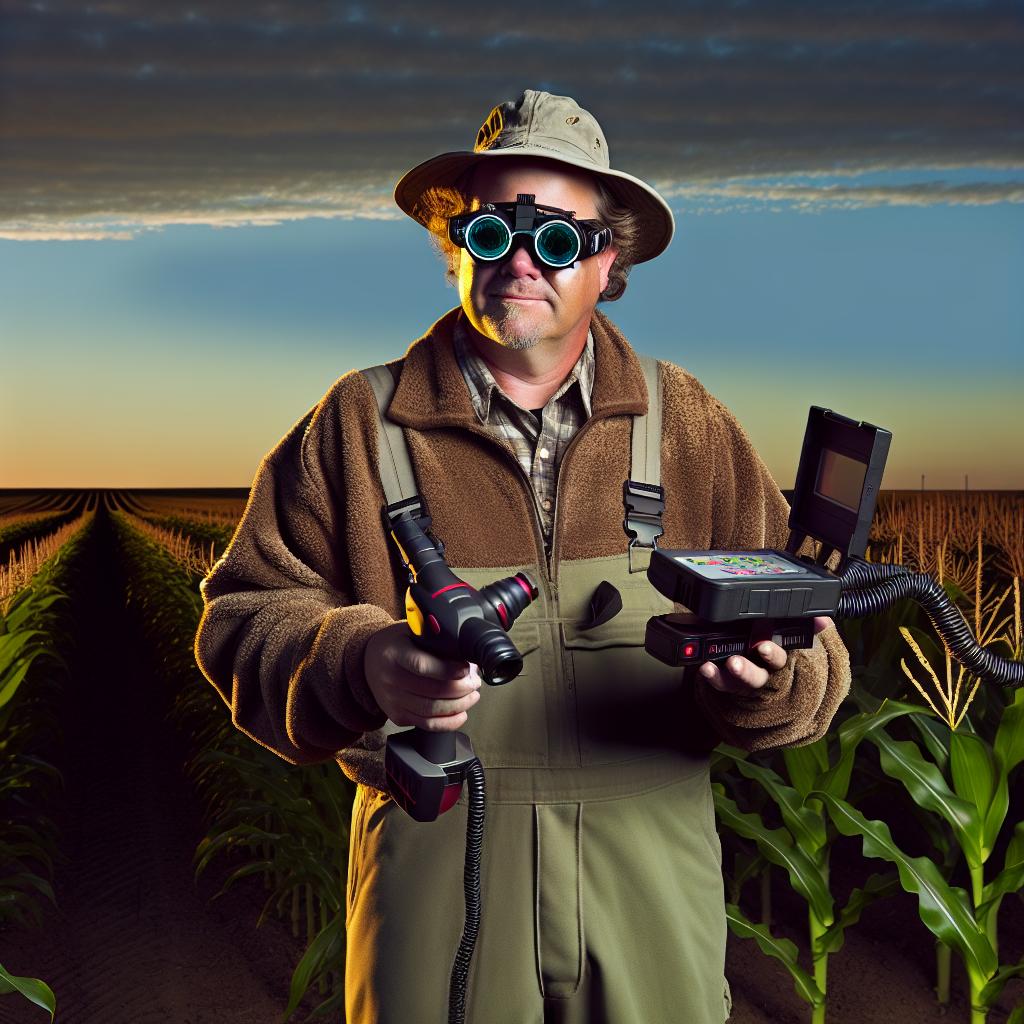
Data Analytics in Disease Forecasting and Management
Introduction to Data Analytics
Data analytics plays a crucial role in modern agriculture.
This technology aids farmers in predicting disease outbreaks effectively.
By analyzing historical data, farmers can make informed decisions.
Utilizing Predictive Models
Predictive models analyze patterns to forecast potential disease risks.
These models take into account weather conditions and crop health data.
Farmers can access real-time information through these tools.
Consequently, they can implement timely interventions and prevent disease spread.
Improving Decision-Making Processes
Data analytics enhances decision-making in farms significantly.
Showcase Your Farming Business
Publish your professional farming services profile on our blog for a one-time fee of $200 and reach a dedicated audience of farmers and agribusiness owners.
Publish Your ProfileFarmers can prioritize areas needing immediate attention.
Using this technology, they optimize resource allocation more efficiently.
This leads to better management of crops and fewer losses.
Case Studies in Successful Implementations
Many farms have successfully integrated data analytics.
For instance, Green Valley Farms used analytics to reduce fungal infections.
By constantly monitoring soil moisture levels, they improved crop resilience.
Similarly, Silver Farms adopted machine learning to predict pests.
Challenges in Data Integration
Despite its benefits, integrating data analytics can be challenging.
Farmers often face issues with data collection methods.
Moreover, the cost of technology can be a barrier for some.
However, ongoing advancements are making tools more affordable.
Future of Data Analytics in Agriculture
The future of data analytics in farming looks promising.
As technologies evolve, farmers will gain more accurate predictions.
This progress will support sustainable agricultural practices.
Ultimately, it will enhance food security and environmental health.
See Related Content: How To Choose The Right Agri-Fintech Solution For Your Farm Needs
Integration of Remote Sensing and IoT in Disease Monitoring
Advancements in Technology
Technology has revolutionized agricultural practices today.
Remote sensing allows for large-scale monitoring of crops.
Farmers can now detect disease symptoms early.
IoT devices provide real-time data from fields.
These technologies help optimize resources effectively.
Benefits of Remote Sensing
Remote sensing captures images of crops using various wavelengths.
This process identifies stressed plants due to disease.
Additionally, multispectral and hyperspectral imagery enhance detection accuracy.
Farmers can use this data to assess field health quickly.
Consequently, timely interventions can be implemented.
Role of IoT in Disease Monitoring
IoT devices collect environmental data continuously.
These sensors measure temperature, humidity, and soil moisture.
Data can indicate conditions favorable for disease outbreaks.
Farmers receive alerts via mobile applications instantly.
Thus, they can act swiftly to protect their crops.
Enhanced Decision-Making
Integration of remote sensing and IoT improves decision-making processes.
Farmers base their actions on accurate, real-time information.
This minimizes the use of chemical treatments unnecessarily.
Furthermore, this approach fosters sustainable agricultural practices.
Ultimately, it leads to higher yield and better quality produce.
Cost Efficiency and Resource Management
Using these technologies reduces operational costs significantly.
Farmers can allocate resources better based on collected data.
Precise monitoring means applying treatments only when necessary.
This precision conserves water, fertilizers, and pesticides.
Showcase Your Farming Business
Publish your professional farming services profile on our blog for a one-time fee of $200 and reach a dedicated audience of farmers and agribusiness owners.
Publish Your ProfileAs a result, farmers increase their profitability sustainably.
Case Studies of Successful Farmers Using Advanced Technologies
Innovative Solutions by Green Fields Farm
Green Fields Farm faced severe crop disease issues in their soybean fields.
They implemented an AI-driven disease detection system.
Within weeks, they identified diseases earlier than before.
This technology helped them reduce pesticide use by 30%.
As a result, their soybean yield increased by 15%.
The Success of Organic Valley Co-Op
Organic Valley Co-Op adopted drone technology for crop monitoring.
They discovered a significant increase in disease identification speed.
Moreover, they improved the health of their organic crops dramatically.
This change led to higher customer satisfaction and increased sales.
Farmers noted that the drones saved hours of manual labor weekly.
FarmTech Innovations at Sunny Acres
This allowed them to visualize plant health in real-time.
They quickly adjusted their maintenance practices and resource allocation.
Subsequently, they saw a 20% reduction in crop loss due to diseases.
Furthermore, their operational costs dropped significantly.
High-Tech Solutions at Emerald Farms
Emerald Farms utilized machine learning models to predict disease outbreaks.
They collected data on weather patterns and soil health.
By analyzing this information, they made proactive decisions.
This approach reduced their reaction time to potential disease threats.
Consequently, they enhanced overall crop resilience and productivity.
The Impact of Advanced Detection in Rural Growth
These case studies highlight significant real-world benefits.
Farmers using advanced technologies experience higher yields and lower losses.
They also enjoy improved efficiency and reduced operational costs.
Ultimately, these innovations pave the way for sustainable farming.
The shift towards technology adoption marks a positive trend in agriculture.

